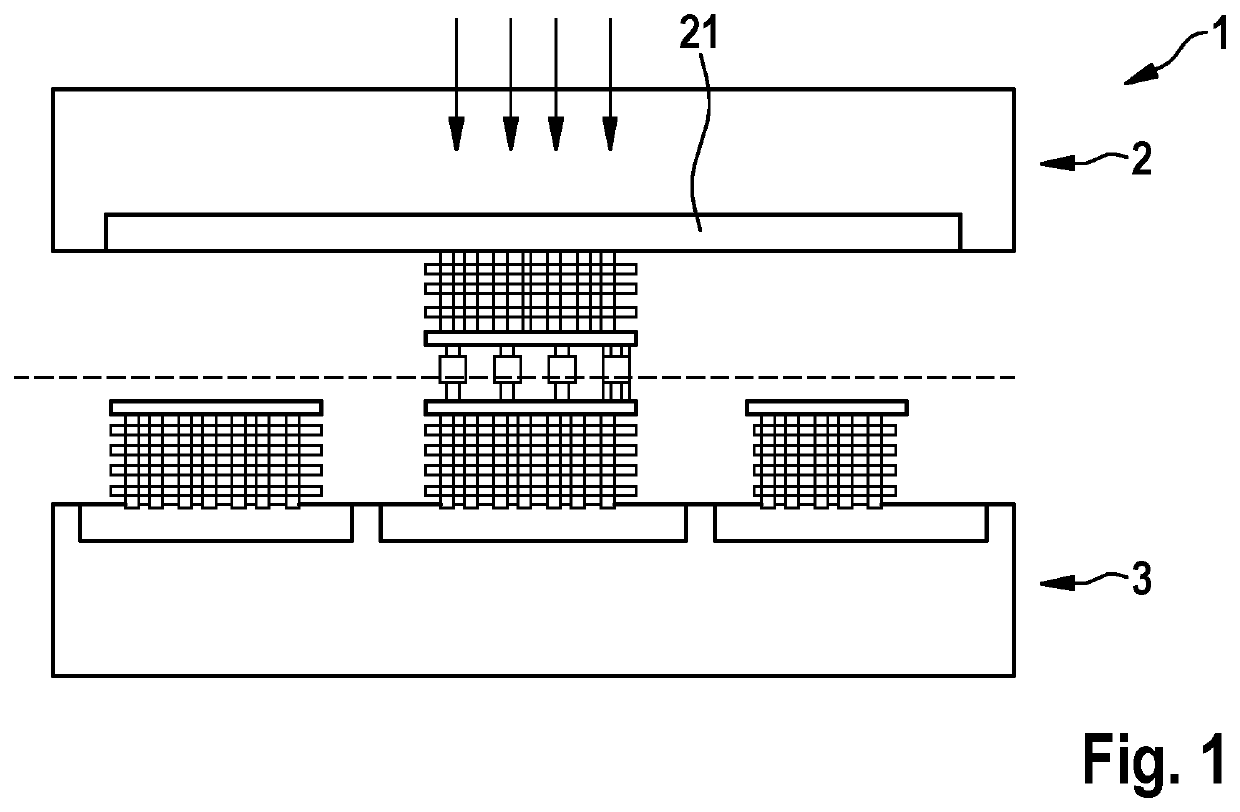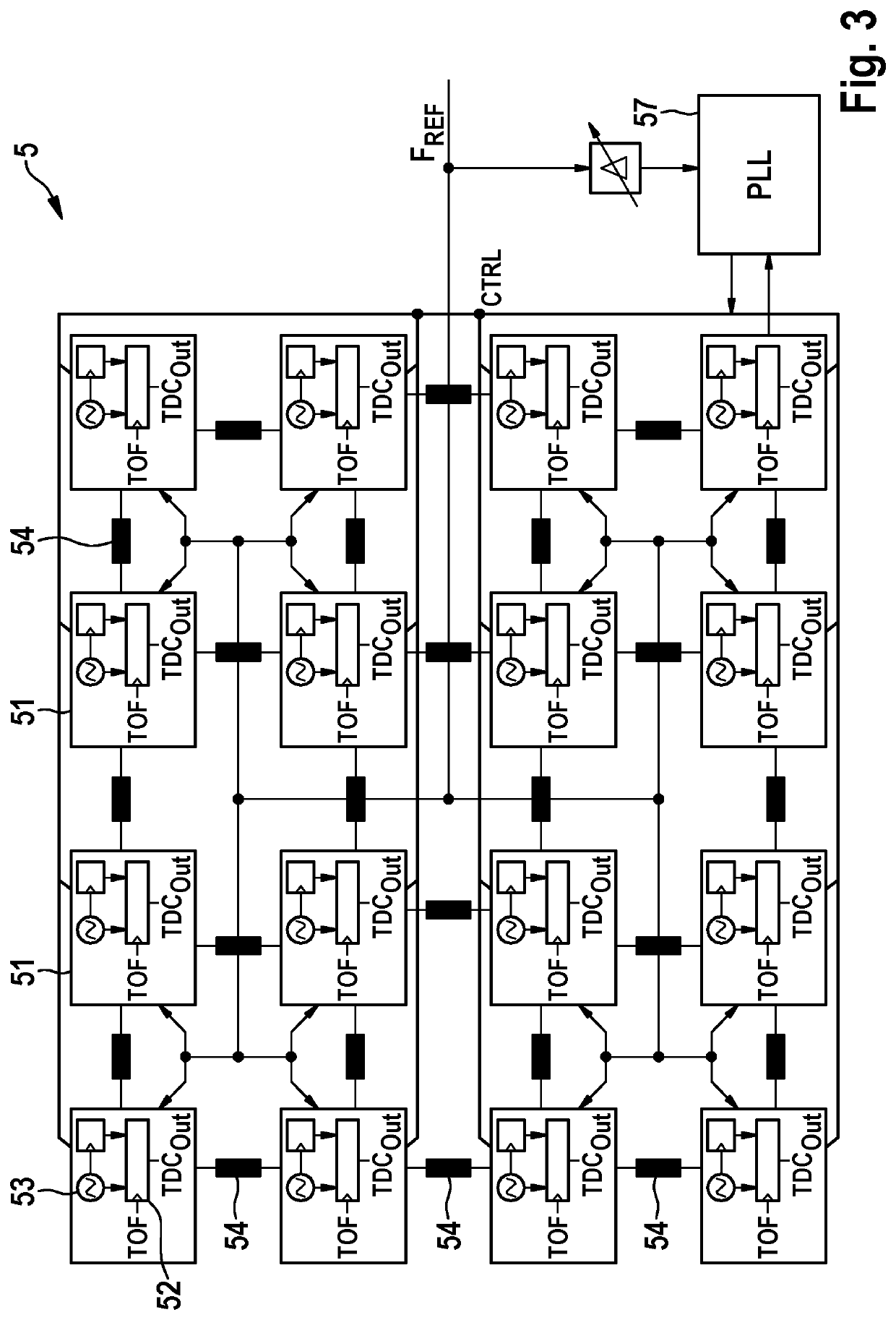Oscillator arrangement for time-to-digital converter for large array of time-of-flight image sensor devices
a time-to-digital converter and image sensor technology, applied in the field of integrated time-of-flight image sensor devices, can solve the problems of large quantization noise, difficult calibration of dynamic variations, limited reference phase/frequency of time-to-digital converters over a large sensor pixel area, etc., and achieve stable well-defined frequency and reduce calibration requirements
- Summary
- Abstract
- Description
- Claims
- Application Information
AI Technical Summary
Benefits of technology
Problems solved by technology
Method used
Image
Examples
Embodiment Construction
[0037]In the following, a basic structure of a 3D image sensor device of one embodiment is described in detail. Such an exemplary 3D image sensor device 1 is shown in FIG. 1 in a cross-sectional view. Substantially, the 3D image sensor device 1 has a stacked configuration with a sensing layer 2 including the pixel sensors in an array 21 formed with one avalanche photodiodes operating in Geiger mode, also known as single photon avalanche diodes SPAD, per pixel.
[0038]In a detection layer 3, a read-out circuitry 31 is coupled with the photodiode array 21. The read-out circuitry 31 is implemented including time-to-digital converters, each associated to one or more of the pixels included in the sensing layer 2. Particularly, the time-to-digital converters each are associated to the pixels (photodiodes) of a portion of the pixel area, substantially a rectangular area portion. To reduce signal propagation delays, the time-to-digital converters are directly arranged under the respective pix...
PUM
 Login to View More
Login to View More Abstract
Description
Claims
Application Information
 Login to View More
Login to View More - R&D
- Intellectual Property
- Life Sciences
- Materials
- Tech Scout
- Unparalleled Data Quality
- Higher Quality Content
- 60% Fewer Hallucinations
Browse by: Latest US Patents, China's latest patents, Technical Efficacy Thesaurus, Application Domain, Technology Topic, Popular Technical Reports.
© 2025 PatSnap. All rights reserved.Legal|Privacy policy|Modern Slavery Act Transparency Statement|Sitemap|About US| Contact US: help@patsnap.com



